Air pollution is an issue that we hear more and more about every day. Although not a new issue, it is something that has only begun being heavily researched recently.
I wrote an article a few weeks ago about air pollution and why we need to worry about it. Today, however, I wanted to present you with 10 facts about air pollution.
Some of these facts you may already know, but some of them might be new to you. Either way, it’s important to be aware and I hope that this article can raise some awareness surrounding the issue.
This post contains affiliate links. For more information, please refer to my affiliate disclaimer.
Information on this blog is for informational purposes only. Readers are encouraged to confirm the information herein with other sources. Furthermore, this information is not intended to replace medical advice from professionals. This website assumes no responsibility for the accuracy of the information, which is subject to change without notice.
1. Indoor Air Pollution Is Often More Dangerous
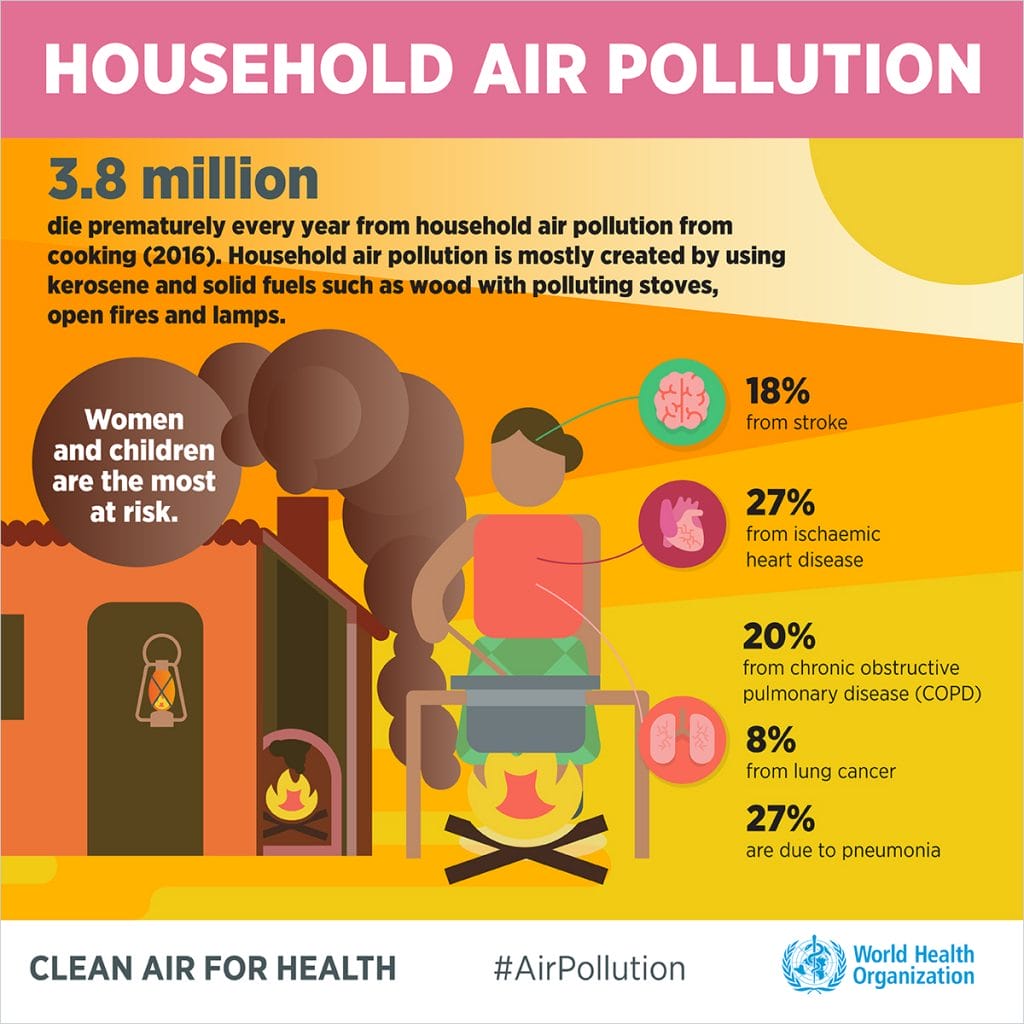
Indoor air pollution is, for most people, more dangerous than outdoor air pollution. In fact, every year household air pollution causes around 4 million premature deaths.
Indoor air pollution can impact all age groups and causes around half of pneumonia based deaths in children under 5 years old. It has also been linked to strokes, heart disease, and lung cancer.
Many of these deaths are attributable to the use of unsafe cooking gases such as kerosene and coal in less developed countries. However, indoor air pollution also provides a threat to those in developed countries.
In fact, some pollutants can have concentrations as much as 100x higher indoors compared to outdoors. To add to this, it was found that Americans, on average, spend 90% of their time indoors.
All of this is to say that indoor air pollution is a great danger to many people. In fact, it’s often far more dangerous than outdoor air pollution.
Wondering how to minimise your exposure to air pollution? Check out the Flow 2 by Plume Labs.
2. Air Pollution Is a Leading Cause of Death

Air pollution is one of the leading causes of death worldwide. It is estimated that 91% of the world’s population lives in areas where air quality exceeds the WHO limits.
In fact, air pollution is such a serious matter that it was found to contribute to 7.6% of all deaths worldwide in 2016. This is about equal to 1 in every 13 deaths being related to air pollution.
While it’s easy to pass this off as a problem that doesn’t impact us, with 91% of the world’s population living in polluted areas, it probably impacts you. Probably more so than you are aware of.
Almost every day air pollution is being linked to more and more health conditions and it seems likely that the deaths caused by and linked to air pollution will continue to grow.
This is especially true now that air pollution has been found to impact nearly every part of the human body.
Learn about respirator filtration mechanisms and MPPS.
3. Air Pollution Is a Combination of Pollutants
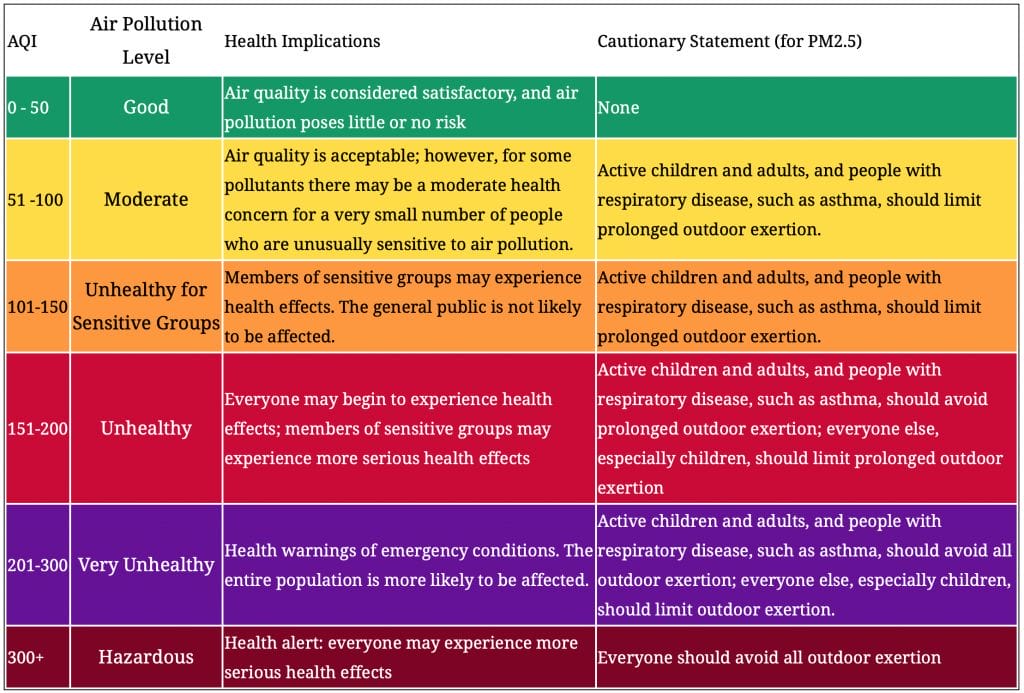
Air pollution isn’t one thing. Rather, air pollution is made up of many different factors and pollutants.
The AQI is a commonly used measurement to find the overall air quality. However, it is actually found by using calculations to measure and weigh different pollutants in the air.
Outdoor air pollution is made up of many different pollutants, including but not limited to PM2.5 and PM10, sulphur dioxide, ozone, nitrogen dioxide, and carbon monoxide.
Indoor air pollution also can include many of these pollutants. However, it can also contain others such as VOCs, carbon dioxide (in excess) and more.
Therefore, when measuring and considering air pollution it is important to not only consider particle pollution such as PM2.5. Every pollutant has different impacts, and they are all important to consider.
Totobobo mask. Mask with 99% filtration.
4. Deaths Caused by Air Pollution are Decreasing
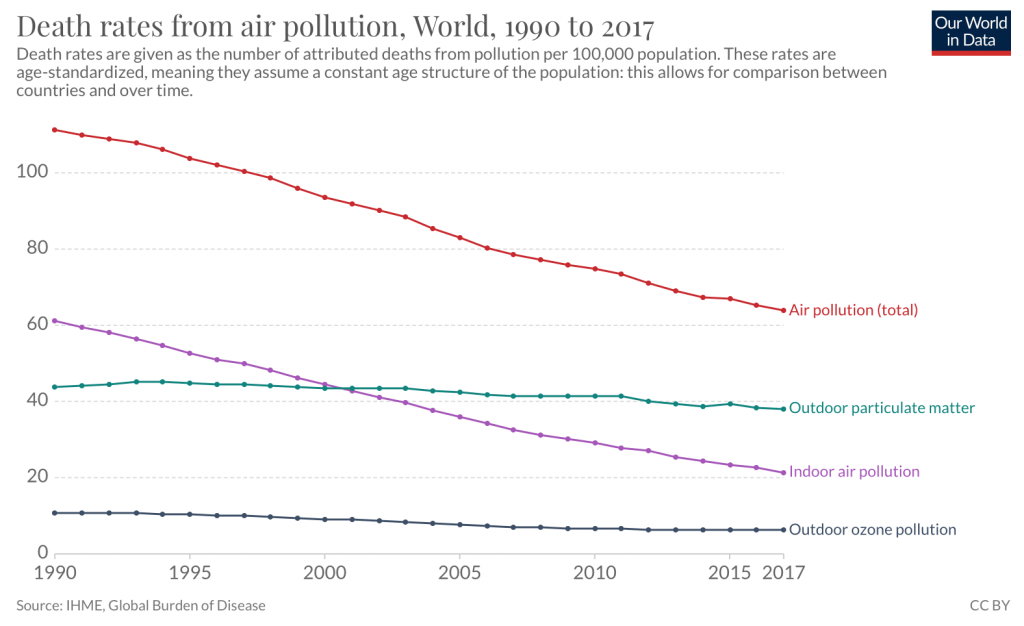
The death rate of air pollution has been gradually falling over the past 30 years. However, the death rate of outdoor particulate matter (such as PM2.5 and PM10) matter has remained relatively steady.
This decrease is mainly driven by an increasing awareness of and action on indoor air pollution. As mentioned above, indoor air pollution is just as much of a danger, if not more so, than outdoor air pollution.
Therefore, although the mortality rates for outdoor particulate matter and outdoor ozone pollution remain about the same, the death rate for indoor air pollution has greatly fallen.
This has driven the overall air pollution death rate down, and we have seen the death rate almost halved over the past 30 years. However, outdoor air pollution is still a danger and it is something that requires our attention.
HI-300 indoor air pollution monitor review.
5. At Risk Groups Are Impacted More
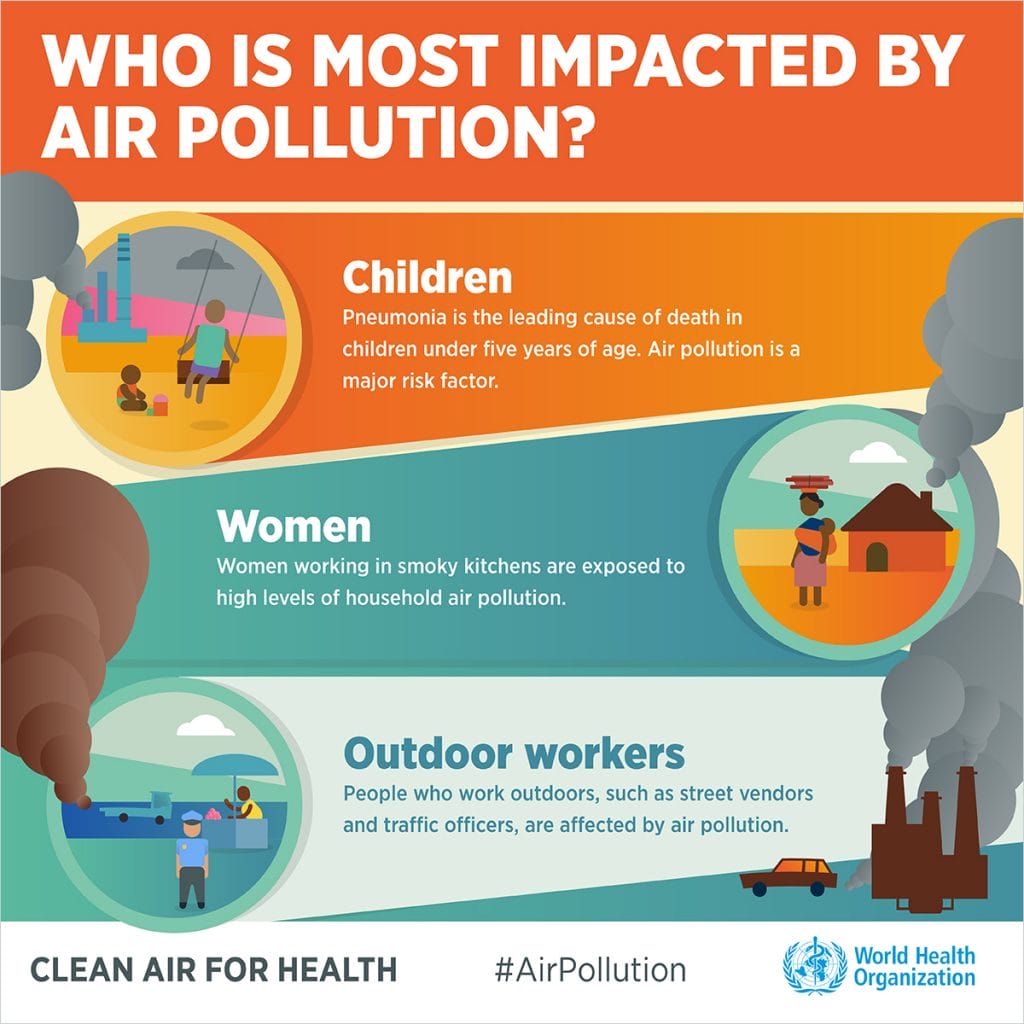
Although every can be impacted by air pollution, there are some at-risk groups that may experience worse symptoms.
People with lung and heart conditions are more likely to be impacted by air pollution and often at lower concentrations than those without. Some conditions include asthma, chronic bronchitis, and pulmonary disease.
Further, younger children and elderly people are more likely to experience worsened symptoms from air pollution.
However, the impacts on health of air pollution aren’t only affected by the condition of your health, but also by other factors such as location.
For example, people living close to highways or busy roads are more likely to have higher exposure to air pollution emitted by traffic.
Globally, some cities also have worse air pollution than others, and living in these areas can increase your chances of being affected by air pollution.
6. Air Pollution Can Increase Suicide & Violent Crime Rates
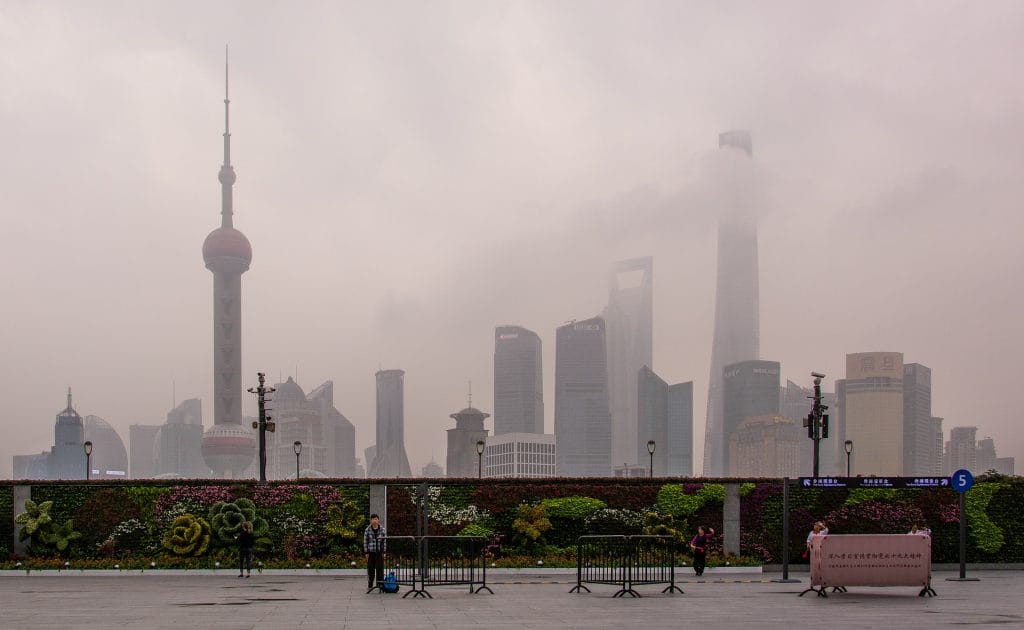
Air pollution doesn’t just lead to heart and lung conditions, but has also been linked to many other health conditions.
In fact, air pollution has been linked to everything from lowering exam scores to depression which can, in some cases, can lead to suicide.
That is to say, that while mortality rates associated with air pollution (primarily through cardiovascular and respiratory diseases) are the most researched and focused on aspects, air pollution has far more widely ranging consequences.
From other angles, we can also see that air pollution has great impacts. Air pollution can lead to less productivity in the workplace and in study. It can even lead to less future income.
Even further, air pollution can lead to many different emotional responses, and has been found to lead to an increase in anger and even violent crimes.
It seems that every day more links are being found between air pollution and other conditions.
7. The Weather Highly Affects Air Pollution
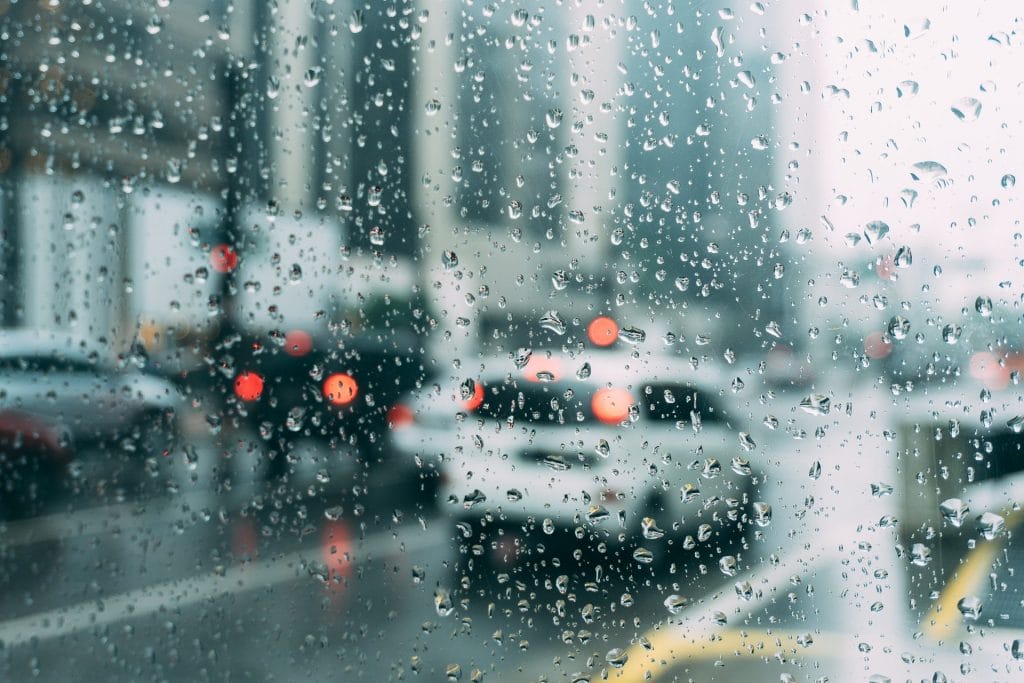
Air pollution is highly affected by the weather, and the state of the weather can increase or decrease air pollution levels greatly.
In some areas, wind brings pollution from some areas into others. This is an especially big issue for countries such as South Korea, which face big air pollution issues when wind blows particulate matter from factories on China’s east coast.
However, higher temperatures and sunshine can also lead to higher levels of pollution due to increasing both the rate and frequency of chemical reactions in the air.
On the other hand, rain can virtually remove air pollution temporarily (at least in the form of fine particles such as PM2.5) by catching the particles and making them fall to the ground.
Often after rain in Seoul, you can see yellow dust over the ground. This is fine dust that has been brought down to the ground in the rain.
8. Only Respirators are Effective Against Fine Dust

Only specific types of masks are effective against fine dust particles. Although you will see all kinds of masks worn on days of high pollution, it’s important to have the right kind.
To actually filter fine dust you need a respirator – in other words, a mask that holds some kind of respirator rating. The most common ratings are the N series (N95, N99 and N100) and the FFP series (FFP1, FFP2 and FPP3).
These respirators are tested for fine particle filtration (usually at 0.3 micrometres) and are made out of materials capable of filtering such fine particles.
Many commonly worn masks, such as surgical masks, provide little or no protection against such small particles, and as such, they shouldn’t be worn for protection from pollution.
If you are looking for fine dust pollution respirators make sure to purchase a respirator that is rated with one of the internationally used systems.
9. Nearly Everyone Lives in Polluted Air
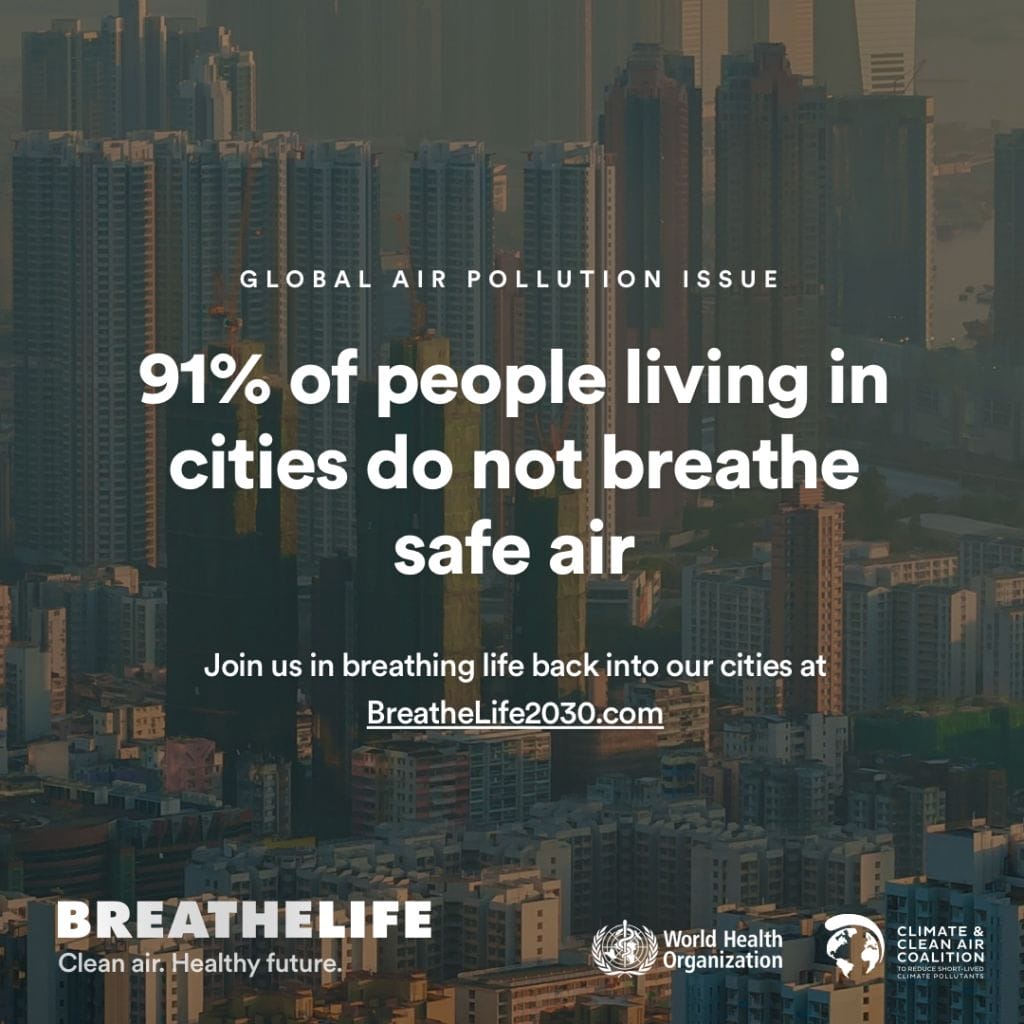
As mentioned earlier, 91% of the world’s population lives in polluted air. That means that only 9% of the world’s population lives in areas where the air pollution is under the WHO guidelines for safe air quality. Only 1/10 people. That’s an astonishing number.
The WHO numbers for safe levels of PM2.5 and PM10 are as follows:
Fine particulate matter (PM2.5)
- 10 μg/m3 annual mean
- 25 μg/m3 24-hour mean
Coarse particulate matter (PM10)
- 20 μg/m3 annual mean
- 50 μg/m3 24-hour mean
Although PM2.5 and PM10 are only two types of the many pollutants, they are some of the most often mentioned due to increasing awareness surrounding them.
However, the issue is that many cities, and even some countries, rarely if ever fall below these values. Considering that the majority of the world’s population lives in cities, this is especially concerning.
This also doesn’t account for indoor air pollution. A factor that is perhaps even more dangerous.
10. Finland, Brunei, and New Zealand Have the Cleanest Air

As of 2017, the top 10 countries based on average exposure to PM2.5 air pollution were as follows:
- Finland
- Brunei
- New Zealand
- Sweden
- Canada
- Iceland
- Estonia
- Norway
- United States
- Maldives
While these countries are known for clean air, it is important to remember that you may still be breathing polluted air within these countries.
For example, in big cities or industrial areas within these countries, air pollution may be far higher than the country average.
More Facts About Air Pollution
I hope that some of these facts about air pollution have been new for you. If not, you must already have looked into the matter a lot! If so, is there anything you would add to this list? I would love to know.
If you are interested in doing some further learning about air pollution there are many great resources out there. You can read the air pollution section on Breathesafeair, or you can refer to other sources such as Our World In Data and the WHO.
Air Pollution FAQ
Is Air Pollution Dangerous?
Yes. Air pollution has been shown to impact every organ in the human body. It has also been proven to cause many conditions such as respiratory and cardiovascular diseases, depression, lower cognitive ability and even suicide.
How Many People Die From Air Pollution?
In fact, air pollution is such a serious matter that it was found to contribute to 7.6% of all deaths worldwide in 2016. This is about equal to 1 in every 13 deaths being related to air pollution.
How Can I Protect Myself From Air Pollution?
When outside, make sure to wear a respirator or fine dust mask. When inside, air pollution is also very dangerous. Make sure to ventilate well and use an air purifier if needed.
What Countries Have the Cleanest Air?
The countries with the (overall, average) cleanest air are: Finland, Brunei, New Zealand, Sweden and Canada.
Is Indoor Air Pollution Dangerous?
Although most people worry about outdoor air pollution, indoor air pollution is, in fact, often much more dangerous. This is due to the fact that there is less ventilation indoors, often more chemical sources, and we spend far more time indoors.
Have Questions or Comments?
Join the discussion on the BreatheSafeAir Community Forum. Ask any questions you have about air quality or adjacent topics and get quick answers!
Environmental protection Agency is the agency that regulates companies and initiates laws to protect our environment to ensure proper levels of pollutants are emitted into the air
I recommend we become educated on how we contribute to air population – example
Encouraging walking to school, riding a bike instead of commercial use (buses/cars), conserve energy reduce electronic usage (tv, smart phones), think of alternative environmentally friendly options that is renewable such as such as solar, wind, hydro energies